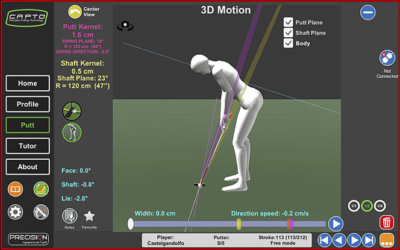

Glycans occur in both simple and complex structures and have varied expression profiles with distinguishable molecular and functional roles.
#Capto s impact free#
This sugar complements present in free or complex structures of organisms is termed as glycan, and the study of glycans for identification of all the genes encoding glycoproteins is refereed as glycomics ( Cummings & Pierce, 2014). Lipids and proteins that are being assessed to identify characteristic features of organisms or cells also contain certain sugar or carbohydrate moieties attached to them. Jai Gopal Sharma, in Bioprospecting of Microbial Diversity, 2022 3.3.6 Glycomics

It is not uncommon to see modest differences in filterability of in-process pools during site transfers, and because these seldom result in significant product loss but rather low levels of foulants, the re-assessment of the appropriate filtration area for each guard or depth filter used in the process should be prospectively defined.

Additional benefits included an improvement in the plant production capacity due to smaller pool volume and thus elimination of a process pool tank bottleneck. The problem was solved by introducing in-process filters, which was not viewed as a major process change (the FDA approved this as a CBE-30). The root cause was an increase in product precipitation in the feedstream to this column. However, a more significant problem led to product breakthrough on the cation exchange column. The majority of the changes were made to accommodate a scale-up of the process in the Malvern facility.” “Process changes were implemented during technology transfer from the Leiden production facility to Malvern manufacturing.
After a thorough investigation, the appropriate process modification was implemented and validated for use in the downstream production process.” Minor process changes were driven primarily by facility fit issues in the new facility. Product breakthrough was observed during the cation exchange chromatography step of the downstream process. “After production of the comparability batches in Malvern, additional work was required to optimize the Malvern process. The post-licensure scale-up and site transfer for Remicade have been described. Remicade (Infliximab) is a mAb directed against tumor necrosis factor alpha, first licensed by the FDA in 1998 for treatment of Crohn’s disease. Philip Lester, in Biopharmaceutical Processing, 2018 51.4.2 Remicade The aggregates, on the other hand, which have a higher net binding charge compared with the monomer, tend to interact more strongly with the resin and elute after the monomer in the gradient.Īnion exchange chromatography (DEAE-Sephadex A-50)īrian D. The fragments do not bind as strongly to the resin and consequently elute earlier in the gradient than the monomer. 18.2 shows the good separation of mAb fragments, monomer, and aggregates. At a sample load of 76 g mAb/L resin, corresponding to 70% of QB10, the aggregate concentration was reduced from 2%–3% to 0.9%, the HCP concentration from > 300 ppm to 170 ppm, and the concentration of leached Protein A from 3.6 to less than 1 ppm (i.e., below the limit of quantification), with a monomer yield of 93%. Elution was performed by applying a linear salt gradient from 50 to 400 mM NaCl for 20 column volumes (CV’s). Process optimization resulted in a QB10% of 109 mg mAb/mL of resin at pH 5.0 and 50 mM NaCl in the loading buffer. The polishing by CIEC was optimized for capacity and separation of mAb monomer from aggregates by varying the pH and salt concentration under binding and elution conditions. In this case, no intermediate purification step was required. The mAb, an IgG1 with a pI of 8.4, was produced by CHO cells and initially purified by direct capture using Protein A chromatography. This example describes a mAb polishing step using a high-capacity CIEC resin, Capto S Impact.


 0 kommentar(er)
0 kommentar(er)
